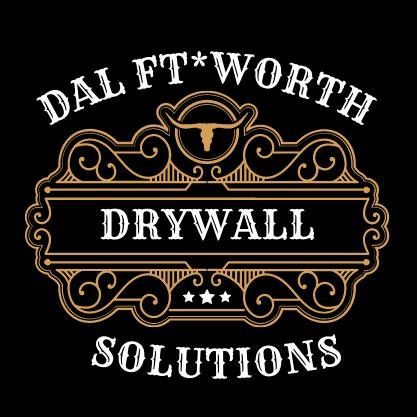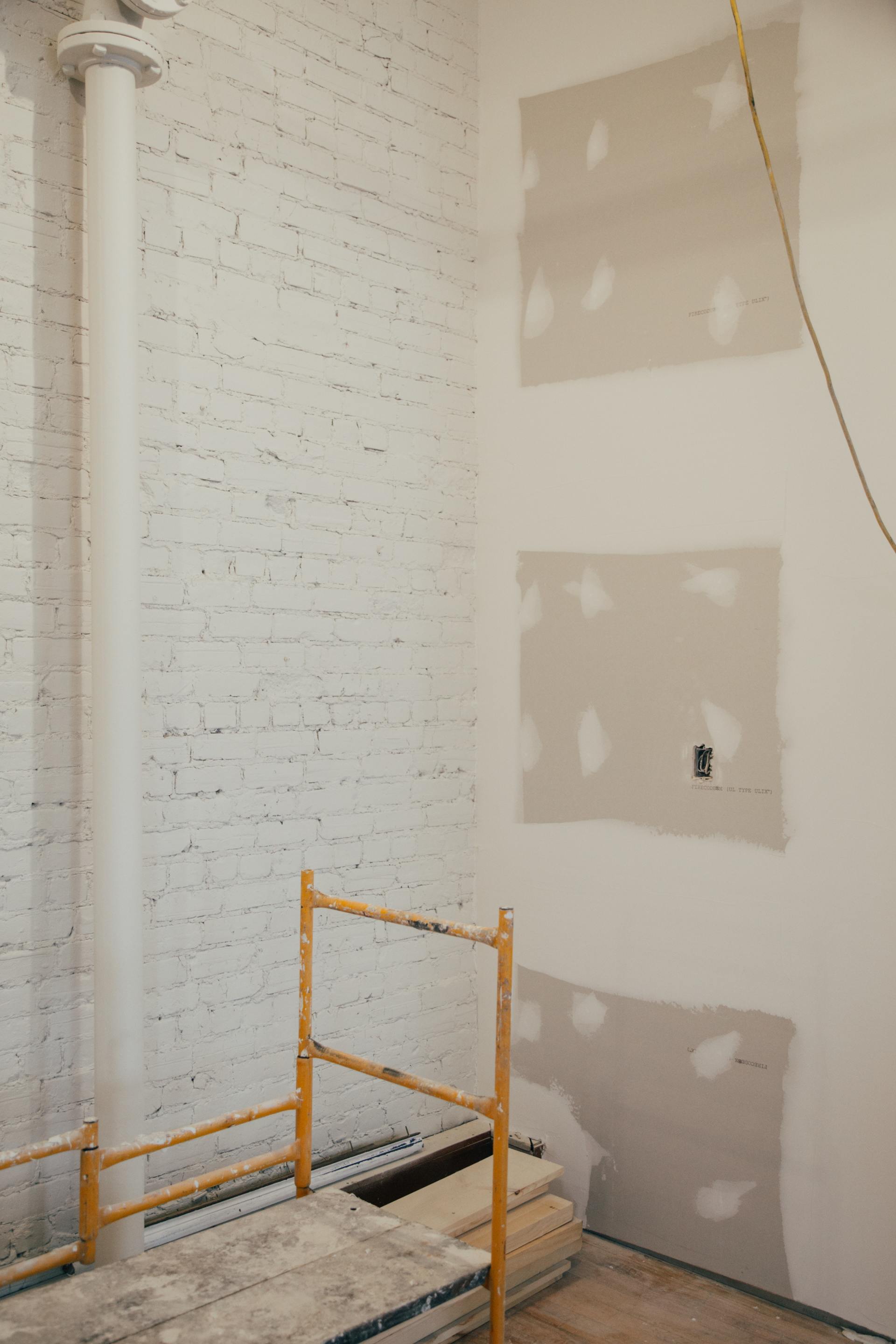Drywall Plastering Fort Worth, TX
Our Drywall Plastering Process
Many people don't know how plastering drywall is done. When you hear the words drywall, plastering is usually what comes to mind. Many people think plastering is putting up drywall. It's not the other way around. Drywall is just one type of plastering. A drywall installation and finishing installation use different types of drywall plaster.
Types of Drywall Installation
Installing drywall can be done in two ways - one way is called veneer plastering drywall. It's done with thin paper-based plastering material. The other type of plastering drywall is called drywall fiberboard. It consists of thicker pieces of plastering material attached to fiberboard sheets.
Drywall Finishing Job
Drywall installation companies do drywall finishing job that includes plastering drywall. Drywall finishing involves spraying drywall finishing compound on the drywall and nailing it down with drywall nails. A drywall finishing company can give you an estimate before plastering drywall yourself.
Plastering Tape Technique
Another drywall installation and finishing technique that most people don't know about is using plastering tape. It's just like the old school tape that was used to plaster floors. You roll it out and push it onto the drywall. You can also use drywall tape on studs and behind doors and windows if you want a really neat look.
DIY Drywall Installation
Drywall finishing techniques don't have to be difficult. You can do a drywall installation and finishing job on your own. It can be a fun project for the entire family to do together. Just make sure you pay close attention to what you are doing. If you get it wrong, your drywall will look amateurish instead of professional. So, why not contact a professional? Click here to know more.
Texture
Texturing your drywall is a unique and creative way to add some style to your interiors. The texture is done with brushes and tools to create level designs in wet mud of drywall, which is then sealed and painted. This can easily give your room a more personal aesthetic. Once the texture has been created in the wet mix, it must be completely dried and sealed before adding and painting over primer. If the paint is added to a textured wall without a sealer or primer, it is likely to have an uneven finish. One of the most popular drywall finishing techniques is called stapling drywall. Stapling drywall is when you actually staple drywall to a piece of wood or other drywall surface. You need to make sure that you are lined up properly when you apply the stapling. The key to a successful stapling drywall installation is that you keep the stapling at an angle so that the drywall underneath is visible. If you don't get the position right, it can look distorted or even ruined.
Drywall finishing techniques involve gluing drywall to the right material. For example, if you are putting drywall between two cabinets, then you need to make sure that the drywall is nailed in tightly. You don't want it to just fall off because it can ruin the look of your drywall. When plastering drywall, it's also important that you use the right type of adhesive. Acryl is the best one for drywall installations. Other types of adhesives are also used, but a lot of people prefer to cry because it is safe to use.
The Drywall Installation Process
A drywall installation can seem like a complicated process when you first start, but with patience and practice, you can learn how to do it properly. Don't be afraid to ask for advice or tips from any of the drywall professionals in your area. They will be more than happy to help you through any problems you might be having. Drywall plastering is one of the most popular ways to improve the look of your home, and with the proper tools and preparation, it can be a very fun DIY project. You can find all of the plastering drywall hints and tools you need to get started by checking online home improvement stores and hardware stores.
Seeking Advice from Professionals
If you're having trouble with drywall installation or drywall finishing, don't feel bad about asking for some drywall tips and instructions from the professionals around you. There are many books dedicated specifically to drywall installation or drywall finishing techniques. You can also find drywall tips from your local hardware store or your home improvement store. Another great place to go for drywall tips is a TV commercial. Most of them come on cable channels aimed at new homeowners. They will show you exactly what to do.
Essential Tools and Tips
Once you've finished reading through all of the drywall tips in a book, visit a home improvement or hardware store and purchase a drywall mastic, or something similar. It's very important that you follow these drywall finishing tips even after you complete the project. It's just too late once the drywall is up!
Final Reminders
Remember that plastering drywall is easy if you have the right tools, the right preparation, and above all, the right information. As long as you take the time to learn drywall finishing techniques, you will have no trouble plastering drywall. And don't forget to ask for the latest drywall installation and plastering tips. With the right tools, the right preparation, and the right information, you will have plastering drywall before you know it!
Gypsum is a mixture of concrete, sand, and water that is added to the top of textured walls and ceilings to match its surface layer. Gypsum provides a clay-like substance that spreads over the top of other wall materials, such as brick, stone, and even concrete, to level the wall and smooth cracks, wrinkles, holes, or imperfections in the wall. wall. Gypsum can be a technical and difficult material to apply, so it's best to let professionals apply gypsum in layers.
Wall plastering
Plastering walls can be done in just one day. However, the important part is ensuring that the plaster gets enough time to dry before adding more layers or solutions to the surface layer. Walls that have been recently plastered should be allowed to dry for at least a few days before adding primers or paints. When plastering your walls, we always take precautions to cover floors and furniture to prevent plaster from leaking in unnecessary places.
Ceilings
Due to the location of the ceilings or their current state, plaster ceilings can take longer than standard walls. This is because some ceilings will need to be cleaned before adding plaster. For older roofs that have the texture or style of popcorn, they should be cleaned of any dusty debris that comes off the roof surface. Failure to remove this can cause small pieces of so-called "popcorn" to stick to the plaster and create an uneven finish. Once cleared of dust, scale and debris, the ceiling is ready to be plastered.
Appearance
While the look of plaster isn't exactly what you're going to be excited about, it does provide you with a starting point to get creative. If you're plastering on bricks or other building materials that can't be easily painted, the newly plastered walls offer the basic look that allows you to customize them in every way. Once a wall has been plastered, you have the freedom to paint over it using standard wall paints. You'll need a primer and adding what's called a "neutralized" paint coat, since adding paint to a recently plastered wall can make the paint dry quickly and peel off even faster. Adding a coat of diluted mist paint will prevent this from happening and may improve the color of your final product.
By properly applying gypsum and plastering techniques, you can achieve a smooth and durable finish for your walls and ceilings, enhancing both the appearance and longevity of your home. If you are considering plastering or need help with any other drywall services, it’s always best to consult with professionals to ensure the job is done right. Feel free to
contact us for expert advice or a consultation. For more insights and tips on wall and ceiling maintenance, be sure to explore our
latest blogs. We’re here to help you every step of the way in your home improvement journey.
Cost's
The cost of installing plaster ranges depends on the size of the room in which you want to do the work. Larger walls and ceilings or space to cover will incur more expenses. Gypsum is known for its stability and strength, so when you invest in gypsum to cover your walls and ceilings, you get quality for your entire use. If plaster cost is what sets you apart from the installation, we're here to help make the decision a little easier. If a product or service does not meet the budgets of our clients, we find alternatives and make suggestions or develop payment plans that provide services to our clients without compromising the quality of their home.
In addition to drywall plastering, FT Worth Drywall Solutions offers a comprehensive suite of services to cater to your home improvement needs. Whether you're looking for plastering near me for a quick touch-up or a complete renovation, our skilled team is here to help. We also extend our expertise to exterior areas, including lawn and swimming pool enhancements, ensuring your outdoor spaces are as refined as your interiors.
Expert Plastering Techniques
Our team is proficient in various plastering techniques, from traditional stucco to modern drywall applications. We work closely with homeowners and general contractors to deliver impeccable results. Whether it's a handyman task or a full-scale construction project, our services are designed to meet your specific needs.
We understand the importance of integrating aesthetics with functionality. That's why we offer specialized services like spa and swimming pool plastering, ensuring these relaxation spaces are both beautiful and durable. Additionally, we provide waterproofing solutions to protect your home from water damage, essential for maintaining the integrity of your plaster work.
For those looking to revamp their interiors, we offer services in tiling, bathroom and kitchen remodeling, and bedroom refurbishments. Our expertise also extends to exterior finishes like pressure washing and pool remodeling, ensuring your property looks its best inside and out.
Our team also excels in more intricate jobs like pebble and masonry work, landscape enhancements, and comprehensive drywall solutions. Whether you need a quick fix from plasterers in my area or a detailed plaster job in my area, FT Worth Drywall Solutions is your go-to provider.
We provide free quotes for all our services, making it easy for you to plan your projects without any surprises. With a commitment to quality and customer satisfaction, we ensure that every job, big or small, is handled with the utmost care and professionalism. Contact us today to learn more about how we can transform your home.
Frequently Asked Questions About Drywall PLASTERING
What is drywall plastering?
Drywall plastering is the process of applying a thin coat of plaster or joint compound over drywall to create a smooth or textured finish on walls and ceilings. It helps to cover seams, screw holes, and imperfections, preparing the surface for painting or other finishes.
How is drywall plastering different from traditional plastering?
Traditional plastering involves applying multiple layers of plaster over wood lath or other surfaces, whereas drywall plastering uses a thinner application of joint compound or finishing plaster over pre-installed drywall. Drywall plastering is quicker, easier, and less labor-intensive than traditional plastering.
How do you plaster drywall?
To plaster drywall, first, apply a base coat of joint compound to cover seams and screw holes. Once dry, sand it smooth. Then, apply one or more thin layers of finishing plaster or joint compound over the entire surface using a trowel or wide drywall knife. Sand between layers for a smooth finish.
What’s the difference between joint compound and plaster?
Joint compound is a gypsum-based product primarily used for filling seams and finishing drywall, while plaster is typically thicker and used for creating more durable surfaces or specialized textures. Joint compound is more commonly used for drywall plastering, while traditional plaster is often used in older or decorative projects.
Can you texture drywall plaster?
Yes, drywall plaster can be textured to create a variety of finishes, such as knockdown, orange peel, or stippled effects. Texturing is often done after the final coat of plaster or joint compound is applied but before it fully dries, using specialized tools or techniques for the desired pattern.


"I was repainting my son’s room in our house and he wanted a textured wall so I called up the guys at Fort Worth Drywall Solutions to do the job. They applied a wet drywall mixture to the existing drywall to make the area textured, left it to dry, and then applied paint on top of it. My son loves his new room!”
– Charles G
I had been looking to have spray foam my attic for better insulation. The team at Fort Worth Drywall Solutions were very helpful when it came to scheduling the spray foam appointment and the aftercare for our attic. They assured me I would see a change in my energy bills and I did within the first few months!”
– Carey L
When I was remodeling my home, I really needed a drywall contractor to install sheets in our living room. I was so fortunate to have come across Fort Worth Drywall Solutions. They were super friendly and welcoming to my wishes and accommodated to my schedule. Thanks, Forth Worth Drywall Solutions!”
– Andrea R
Contact US
To learn more about our current range of products and services, you can get incontactwith us via the telephone number listed on our website. On this number, one of our customer service agents will be more than happy to assist you by answering any questions or scheduling appointments for your drywall, as needed. If you would rather write us an email or would like to receive an estimate for a service you’re interested in, at no extra cost, you can do so by filling in the contact form on our website and we’ll respond to you as soon as possible. Our drywall contractor company offer services on multiple locations.
Visit our blog page to explore in-depth information and insights about the wide range of services our skilled experts offer. Learn how they can cater to your specific needs with their expertise and experience.
Working hours
- Mon - Sun
- -
Copyright ©Fort Worth Drywall Solutions | Proudly Powered by Snapps | SEO







